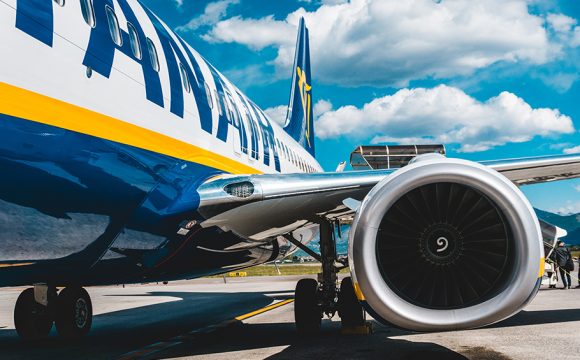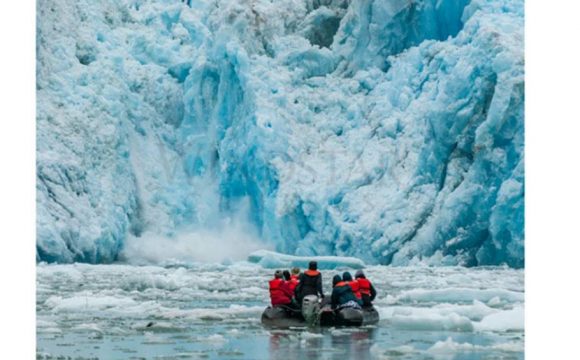We are sure that everyone is following the government’s advice and self-isolating at the minute to help curb the spread of COVID-19, however we also know that if you are anything like us (avid travel lovers) you will be feeling a touch of cabin-fever coming on, but fear not! We have something ‘a little wild’ to keep you entertained – discover Chile’s unique wildlife and where to find it!
Due to its astonishing biodiversity, ranging from the world’s driest deserts to the frozen South of Patagonia, Chile is home to a spectacular range of wildlife. The beautiful extremities of the country however, leave it particularly vulnerable to changes in climate and human interaction – meaning that many of Chile’s 33,000 native species of flora and fauna are now endangered.
In line with this years’ World Wildlife Day theme to ‘sustain all life’ Chile continues to make outstanding efforts to protect the wildlife inhabiting its National Parks, Marine Parks and Reserves. For example, the ground-breaking creation of the ‘Route of Parks’ – a new route stretching 1,500 miles through 17 National Parks, made up of over 20 million donated acres of strictly protected federal and private land – offers a safe haven for Chile’s wildlife to flourish. In its oceans, the Chilean government signed legislation in 2018 to establish one of the world’s largest marine protection areas, encompassing the Rapa Nui (Easter Island) waters. The Rapa Nui Marine Park, roughly the size of the Chilean mainland, is home to 77% of the Pacific Ocean’s fish abundance and includes 27 species which are at risk of extinction.
Whether on land or ice, high in the clear Chilean skies or under its pristine waters – there’s a wildlife experience for everyone:
WILDLIFE IN CHILE
Northern Chile
Llamas, Guanacos, Vicuñas and Alpaca – In the stunning Chilean Altiplano – at altitudes of over 3,500 metres above sea level, these iconic Camelidae can be spotted roaming the vast planes. As well as enjoying these impressive creatures in the wild, trekking the desert with traditional Andean Llamas alongside local communities and indigenous people is a great way to learn about the integral role these creatures played in the lives of the ancestral communities.
Flamingos – Three species of flamingo, the Andean, Chilean and James’s flamingos inhabit the Atacama salt flats and Los Flamencos National Reserve. The best way to discover the region’s lagoons, salt flats and mountains is by foot. There are a number of eco-friendly tour companies that offer guided hikes across the National Reserve’s seven regions including the infamous Moon Valley.
Humboldt Penguins – Made up of 2,194 acres across three uninhabited Islands: Chañaral, Choros and Damas, the Humboldt Penguin National Reserve is the best place to see these charming little birds. Boat tours around the islands are numerous, with many responsible companies to choose from – navigating the pristine waters and observing the penguins in their natural habitat from a safe distance.
Chinchilla – These cute little critters are critically endangered in the wild after being historically hunted for their notoriously soft fur and can now only be found in Chile. Inhabiting the dry and rocky terrains of the Antofagasta Region, they are difficult to spot so expert guides are a must.
Quirquincho – The Andean-hairy armadillo, or Quirquincho lives around Arica and the Antofagasta region and is another of Chile’s protected species. The rare creatures used to be hunted by local communities and turned into musical instruments and their body parts used in traditional medical remedies – however the sale and capture of the Quirquincho is now strictly prohibited.
Southern Chile and Patagonia
Puma – The elusive Patagonian Puma can be found in the raw wilderness of Corcovado National Park – part of the protected Patagonian Parks Network, home to 82 turquoise lagoons and surrounded by ancient forests. This agile and largely solitary feline is a protected species, with numbers which are now recovering following on from years of hunting by farmers protecting their livestock. Conservation and sustainable puma tracking excursions have helped to educate both locals and visitors and now provide an important source of income for communities who play an integral role in protecting Puma.
Darwin’s Frog – This tiny amphibian, about the size of a 1-inch walnut, is endemic to the temperate forests of southern Chile. Their reproductive system is remarkable with males guarding the eggs and holding them in the vocal sac until they hatch. It makes a noise similar to the song of a bird and can be found in the Huilo-Huilo Biological Reserve – famed for its lush waterfalls and tropical forests this area is best discovered on foot, with beautiful hikes and trails to be discovered.
In the skies
Chilean Eagle and Condor – Whilst the Chilean Eagle can be spotted throughout the length of the country, the Andean Condor (which appears on the National Shield) – the world’s largest flying bird inhabits the heights of Arica and Tierra-Del-Fuego. Birdwatching is hugely popular in Chile, with many specialists offering unique responsible tours and experiences. Other popular species for birdwatching include the Hummingbird of Juan Fernandez, Martin Carpintero and Martin Pescador and Chuncho Owl
Darwin’s Fox – Also known as the Chilote Fox is the smallest and rarest type of fox in Chile and is also on the list of protected species. Inhabiting Nahuelbuta National Park (Araucanía Region), the Valdivian Coastal Range (Los Ríos Region) in mainland Chile and Chiloé Island the illusive species was studies extensively by Darwin on his travels and remains endemic to Chile.
In the Ocean
Chilean Dolphin – The Chilean Dolphin is the only species of cetacean endemic to Chile and is one of the least known. Its body is bluish grey and can be spotted on the coasts from Valparaiso to Tierra del Fuego. These small species, also known as the black dolphin are more shy than the average dolphin, but locatable with an expert guide.
Humpback, Blue Whales and Orca – In Chile, more than forty species of cetaceans can be spotted, ranging from the impressive Humpbacks who thrive amongst the Fjords and glaciers, Blue Whales off the Island of Chiloé, and Orca amongst the archipelago of the Guaitecas in the Aysén region. With extensive conservation work taking place the length of the country, there are a number of ways for visitors to contribute to the ongoing research and protection of the oceans greatest inhabitants.
Juan Fernández fur seal – The inquisitive seal which inhabits Juan Fernández and neighbouring Islands was once one Chile’s most endangered species, presumed extinct. It was extensively hunted for its fur and due to its lack of predators on land and curious nature, they were an incredibly easy catch for human hunters. The complete protection of the species by the Chilean government has led to a somewhat impressive recovery and the charming fur seals are now a major draw for wildlife lovers.
















